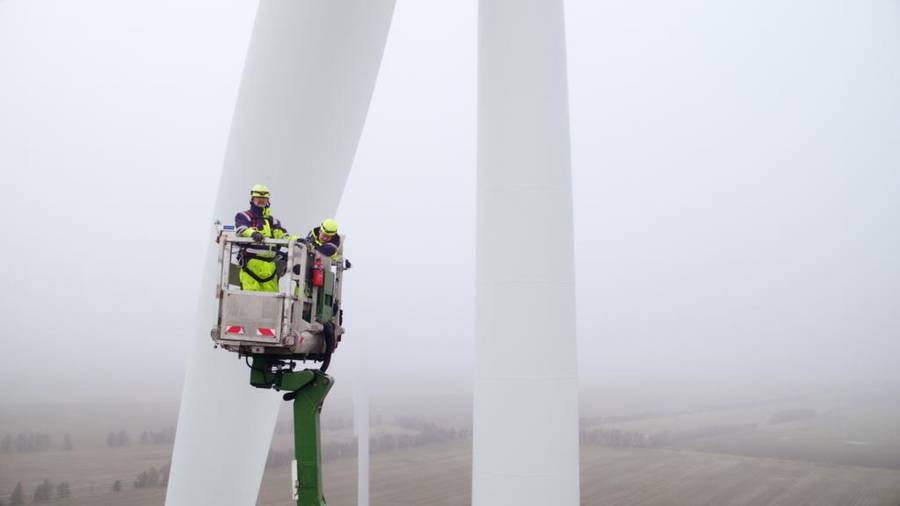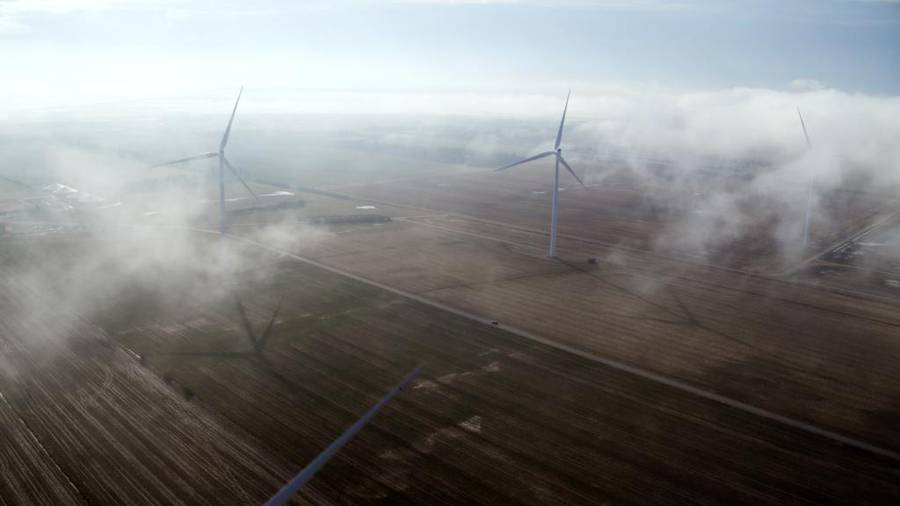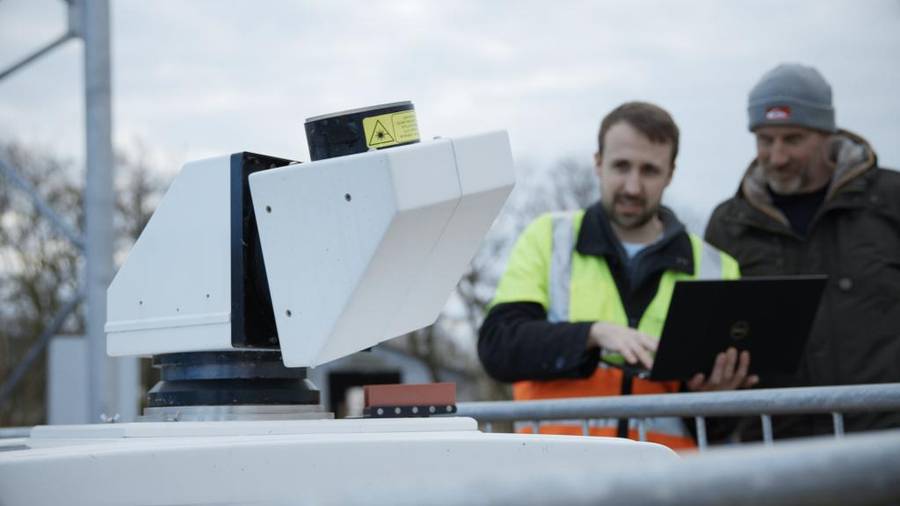
Onshore and offshore wind turbines need to perform at their best to maximise the energy they generate. Currently, methods used to optimise the performance of wind farms mainly focus on the performance of individual turbines. Fortunately, new low-cost wind measurement technologies have been developed that can help improve the performance of multiple wind turbines in large wind farms.
Sensor-assisted wind farm optimisation (SAWOP) will enable better monitoring of incoming wind flow using spinner anemometers and nacelle LiDAR systems. Based on sensor data analysis, strategies can be developed to improve the energy yield of the entire wind farm.
Demonstrations of the technology
Koen Hermans, offshore wind researcher at TNO: "One focus of the analysis is to determine the alignment of the rotor with the wind direction, the so-called yaw alignment. The results will be used to determine the performance of the wind farm and the sensors themselves under freestream and wake conditions."
Wind field measuringsystems
"Our first test site is the onshore wind farm Klim Fjordeholme in Denmark, operated by Vattenfall. It consists of 21 Siemens turbines of 3.2 MW each with a rotor diameter of 113 meter. Because the wind farm is close to the coast, the conditions are similar to an offshore wind farm and has the practical advantage of better access to the turbines.

A measurement campaign is being carried out at this wind farm. Nick Jansen, team leader at Nabla Wind Hub: "The big difference between the two systems is where the wind is measured: at the turbine or hundreds of metres in front of the turbine."
A profiling LiDAR scans the incoming wind field and serves as a reference. Eight turbines are equipped with iSpin spinner anemometers and two forward-facing LiDARs with nacelles from different manufacturers have been installed. During the campaign, these LiDARS are exchanged so that we can compare the results of each LIDAR at the same location. Finally, a scanning LiDAR will map the wake conditions, which will be enhanced by an algorithm to reconstruct the wind field. Special care will be taken to calibrate all sensors to the latest standards to ensure objective measurement of turbine and sensor performance."
Decreasing the wake-effect
Om de opbrengst van een heel windpark te optimaliseren, wordt ook de invloed van het zogeffect onderzocht. Koen Hermans legt uit: “De turbinebladen creëren wervels achter de rotor die het rendement van andere turbines in het windpark kunnen beïnvloeden. Dit wordt het zogeffect genoemd. Als we de voorste turbine in een minder gunstige windstand sturen, levert zal afnemen, maar de turbine erachter kan meer energie produceren omdat het effect van het zog is afgenomen. De economische en technische modellen houden rekening met de extra slijtage en de mogelijk verkorte levensduur van de turbines."
Jan Coelingh, Lead Engineer Wind Resource van Vattenfall beaamt dit: “Het gaat erom de instellingen voor het hele windpark te regelen en niet alleen voor de individuele turbines voor het optimale resultaat.”
To optimise the yield of an entire wind farm, the influence of the zoom effect is also investigated. Koen Hermans explains: "The turbine blades create vortices behind the rotor that can influence the efficiency of other turbines in the wind farm. This is called the wake-effect. If we send the front turbine into a less favourable wind position, output will decrease, but the turbine behind it can produce more energy because the effect of the wake has decreased. The economic and engineering models take into account the additional wear and tear and potentially shortened lifetime of the turbines."
Jan Coelingh, Lead Engineer Wind Resource at Vattenfall agrees: "It's about controlling the settings for the whole wind farm and not just for the individual turbines for the optimal result."

Enhancing performance
"All in all, these measurements provide us with a unique dataset to evaluate the performance of the sensors in free flow and wake conditions. Based on potential performance shortfalls, optimised control settings can be derived. In the final phase of the project, innovative Control Strategies for wind farms will be investigated. The information from the sensors used is expected to improve performance through the use of wind farm control."
This project aims to demonstrate that the overall energy yield of large wind farms can be increased through the use of advanced measurement equipment and associated advanced control strategies. The results of this project will make a valuable contribution to the international standardisation of performance evaluation using these new sensor technologies.
Another tangible result is the creation of a unique measurement database. From this database, the project partners will gain insight into the wind flow of a rotating wind farm, the performance of the turbines and the effectiveness of the monitoring systems.

Jasper Kreeft, Senior Wind Farm Performance Lead at Shell added: "Computational and engineering models for wind resource assessment and wake modelling are continuously being developed and improved. The extensive measurement campaign within the SAWOP project provides a unique dataset to validate these models."
